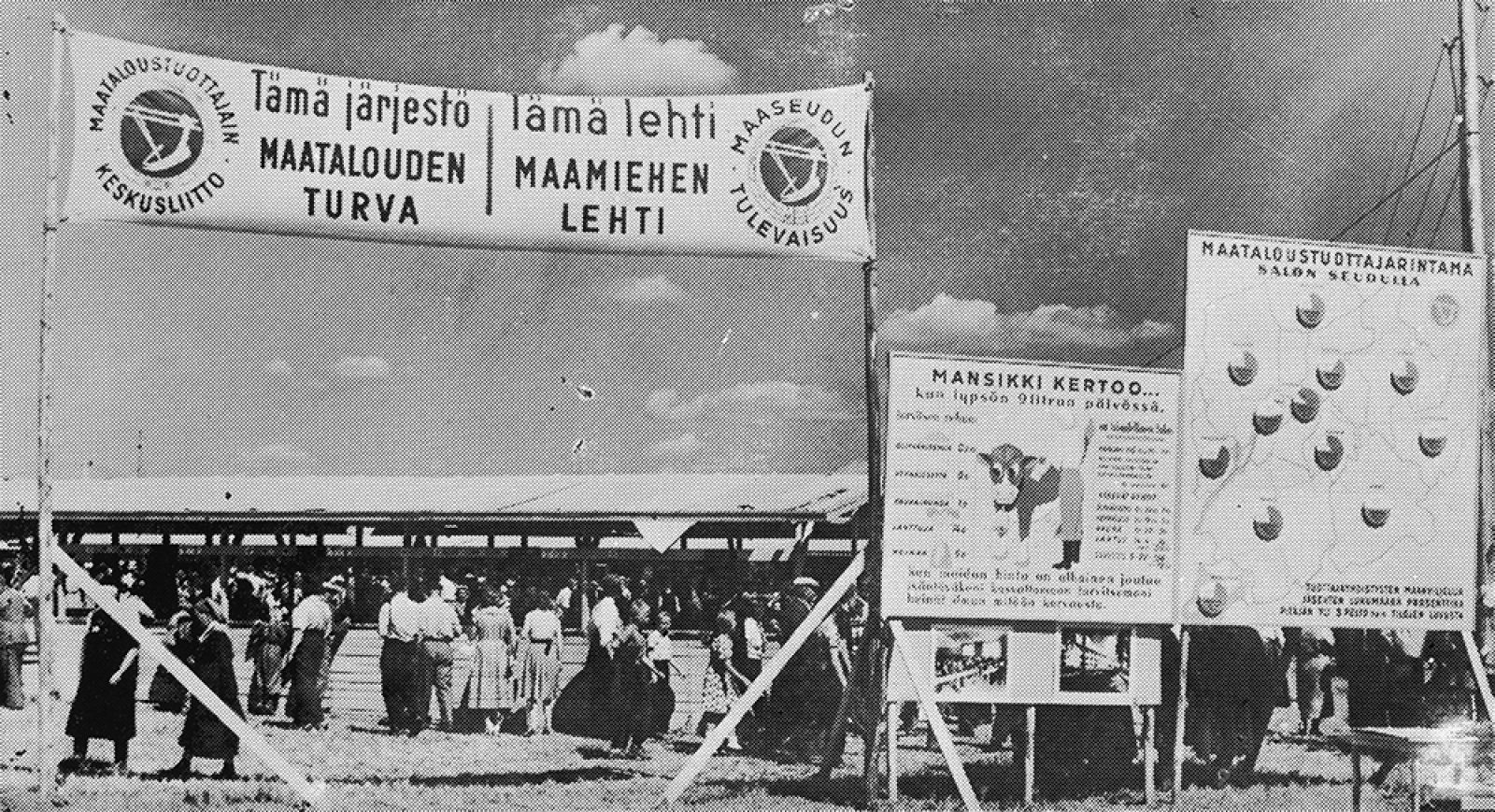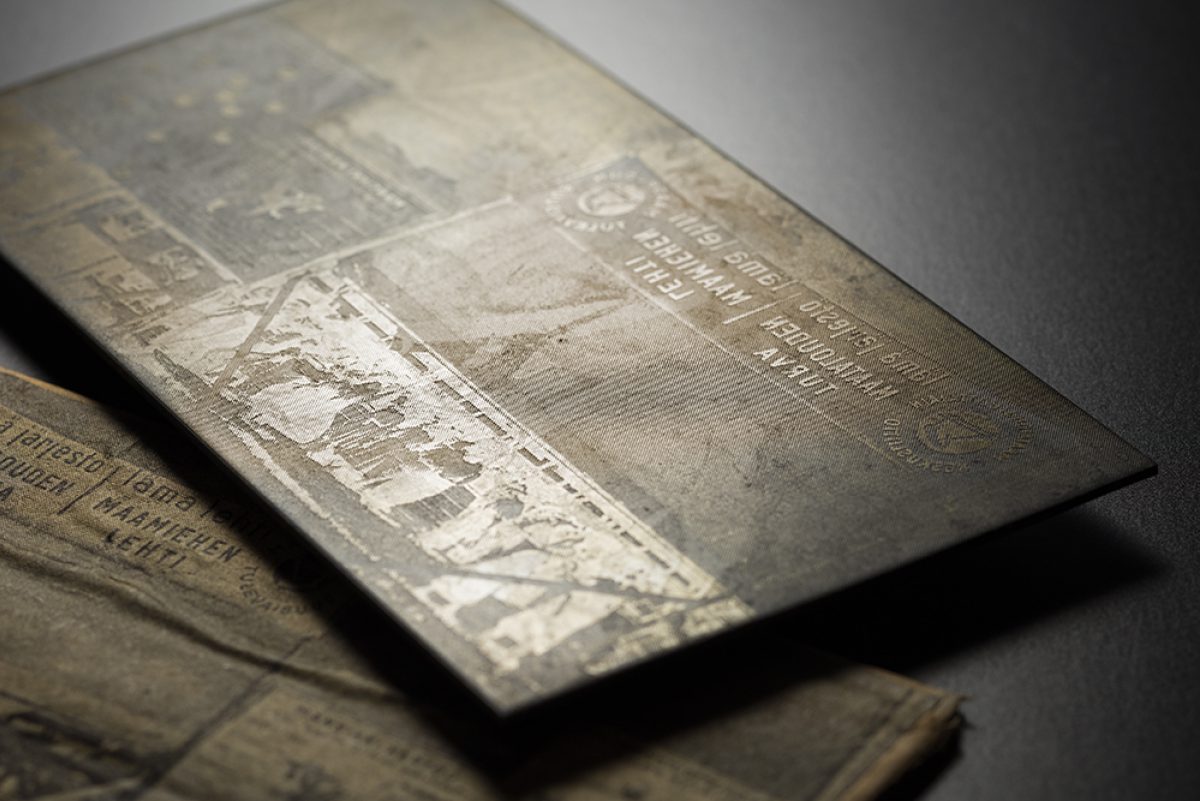
From printing plate to press photo
Back in the day, a printing plate was first prepared of each press photograph for the printing process.
In the early 20th century, press photographs were prepared for printing in photoengraving shops. Photoengraving is a method in which a printing plate is made of a photograph with photographic means and etching. The photograph can then be reproduced using the plate.
Gradually many newspapers set up their own photoengraving shops – for example, the newspaper Kaleva set up one in 1930.
‘Photoengraving is a thing of the past. Neither the tools nor the professional knowledge required for making printing plates exist today. We can still make prints using existing printing plates, but I doubt it would be possible to make entirely new halftone printing plates in Finland nowadays,’ says researcher Markku Kuusela from the Päivälehti Museum.
The making of a printing plate started by photographing the original photograph through a wire screen. This way, the shades of grey in the photograph are turned into dots of different sizes.
The halftone photograph was then attached to a zinc plate that had been made light-sensitive with chemicals. Next, the photograph was etched with diluted nitric acid. The correct dilution ratio of the acid was often established by tasting with the tip of the tongue.
Plate proofs would then be taken of the finished printing plate. The photograph was fixed when necessary and finally attached to a wooden base with nails.
Many boxes of printing plates that were used by the newspaper Maaseudun Tulevaisuus in 1935–1977 remain. What does a zinc plate tell us? Is a printing plate an object that tells us how a photograph ended up on the page of a newspaper? Or is it more about the photograph itself, in which case the subject matter depicted in the photograph is also important?
Most of the zinc plates from Maaseudun Tulevaisuus are wrapped in paper, with the photograph printed in the newspaper glued on top with bone glue. The date of publication is also sometimes written on the wrapping. The captions on the brittle paper are difficult to read.
A printing plate was the culmination of many people’s work. It was considered to be the original of a printed press photo. The films and prints could be disposed of as useless, but the printing plates could be retained for later use. The printing plates could also be melted for reuse. Metal was valuable, and a news photograph became old once the newspaper was printed.
Printing technology moved on to offset printing in the 1970s, and there was no more use for letterpress printing plates. They became a heavy problem, and newspapers disposed of many of their news photograph plates.
Writer Raimo Rajala knows how to make a print with a printing plate. He uses the old Heidelberg letterpress in the Finnish Labour Museum Werstas in Tampere.
Rajala unwraps one of the zinc plates from Maaseudun Tulevaisuus from its paper wrapping, cleans it and attaches it to the printing form. The letterpress presses the printing ink onto the paper: an old press photograph is recreated.
The passage of time can be seen in some prints, as some of the zinc plates have corroded over the years. Other prints come out well. Finally, he covers the printing plates in oil to protect them and wraps them up in silk paper.
The prints are digitised in the Press Photo Archive JOKA of the Picture Collections of the Finnish Heritage Agency, and they can be found via the joka.kuvakokoelmat.fi image service.
Raija Linna
Kamera 9/2016

A halftone printing plate from the press photograph collection of Maaseudun Tulevaisuus and its newspaper wrapping. Photo: Ilari Järvinen / Finnish Heritage Agency